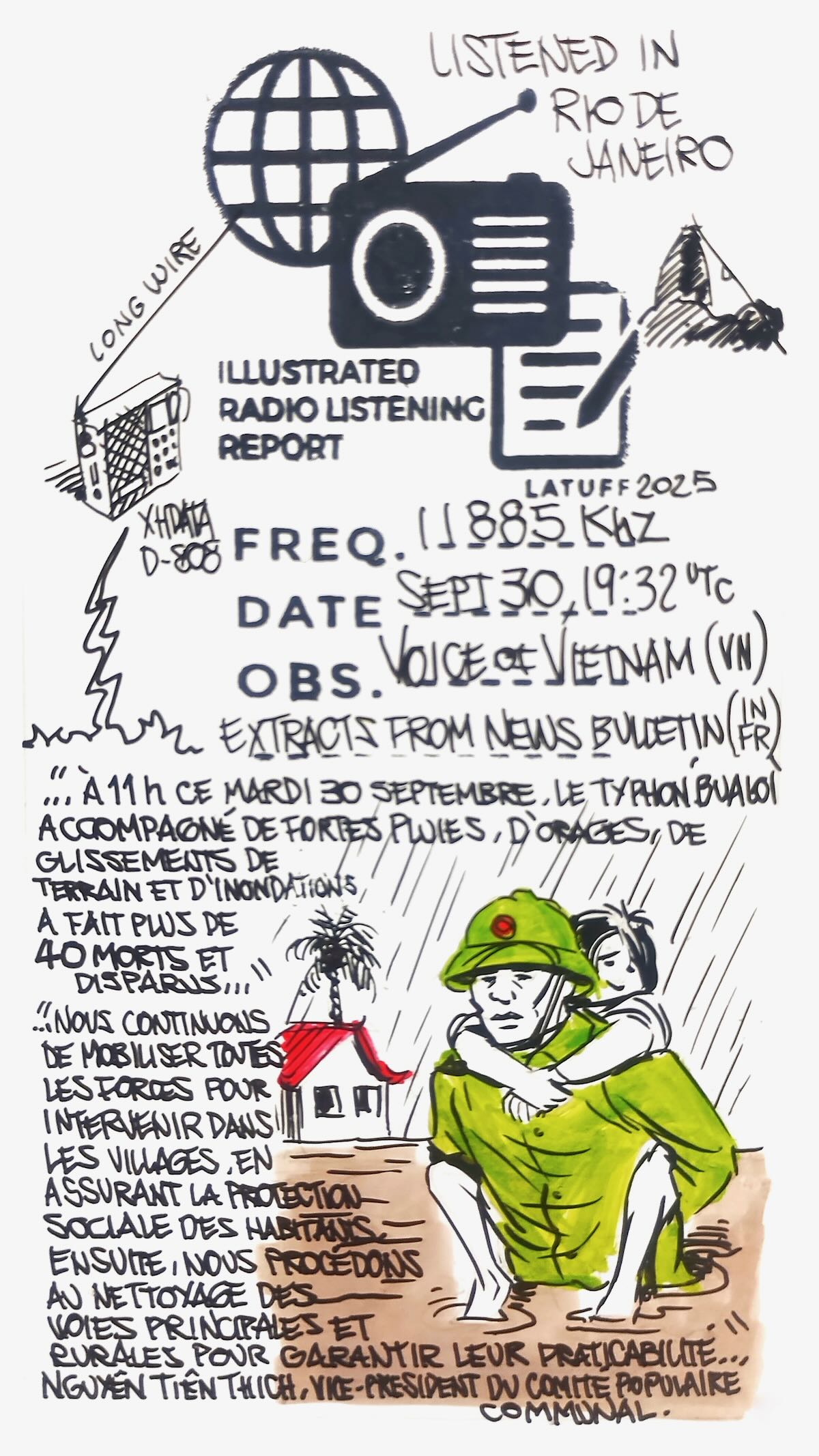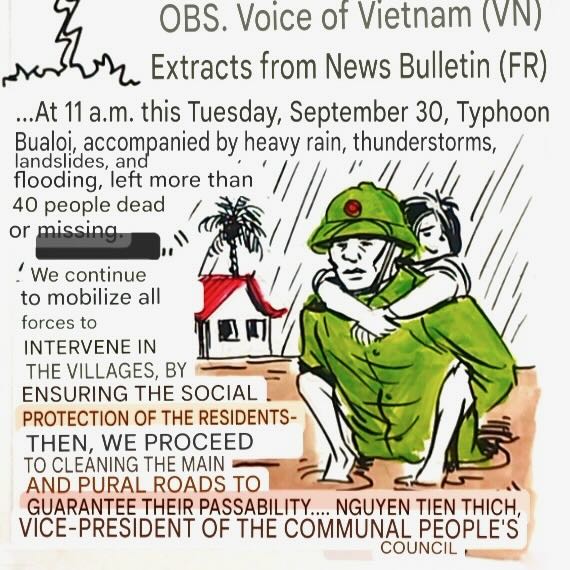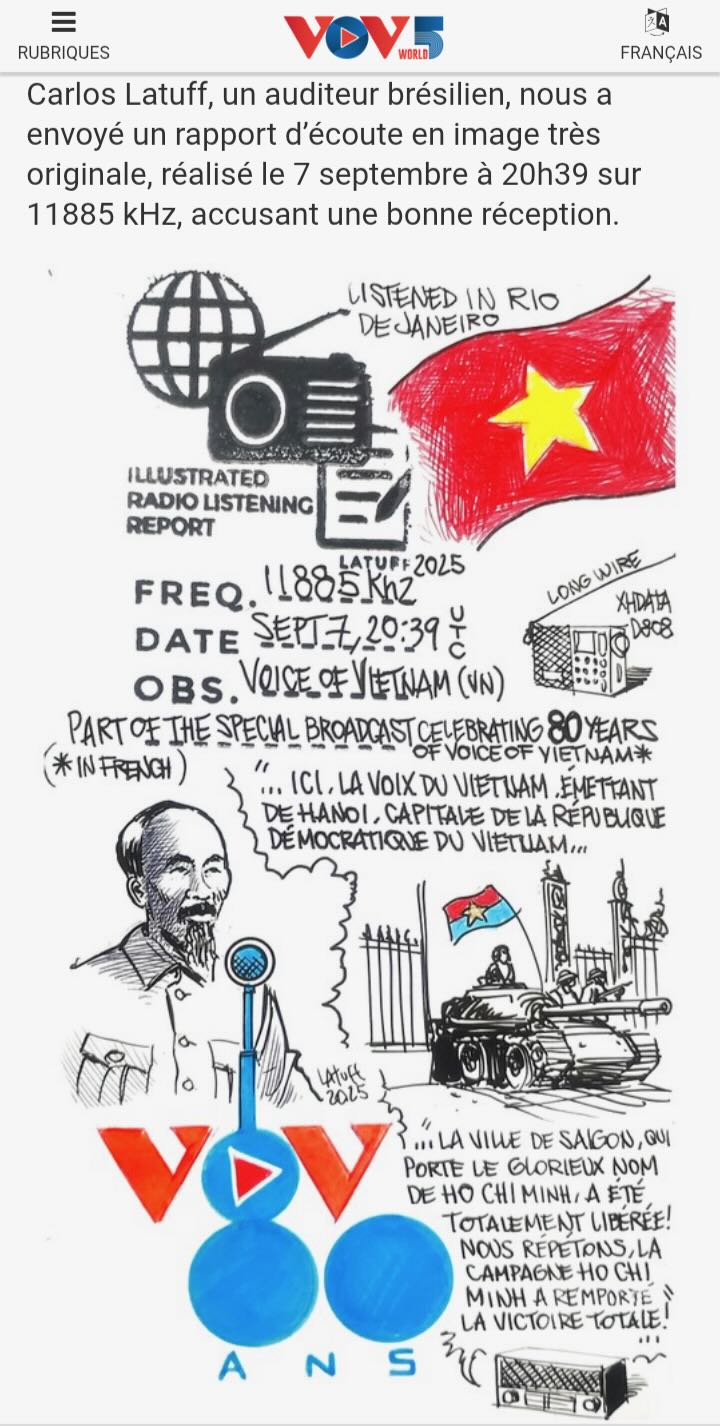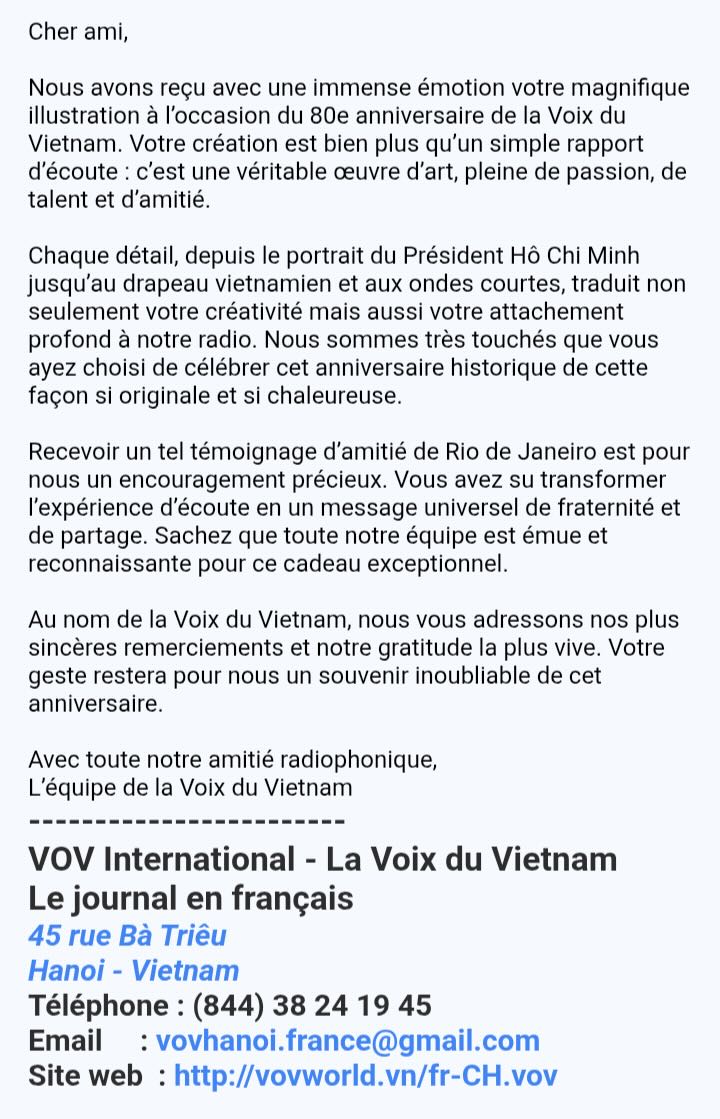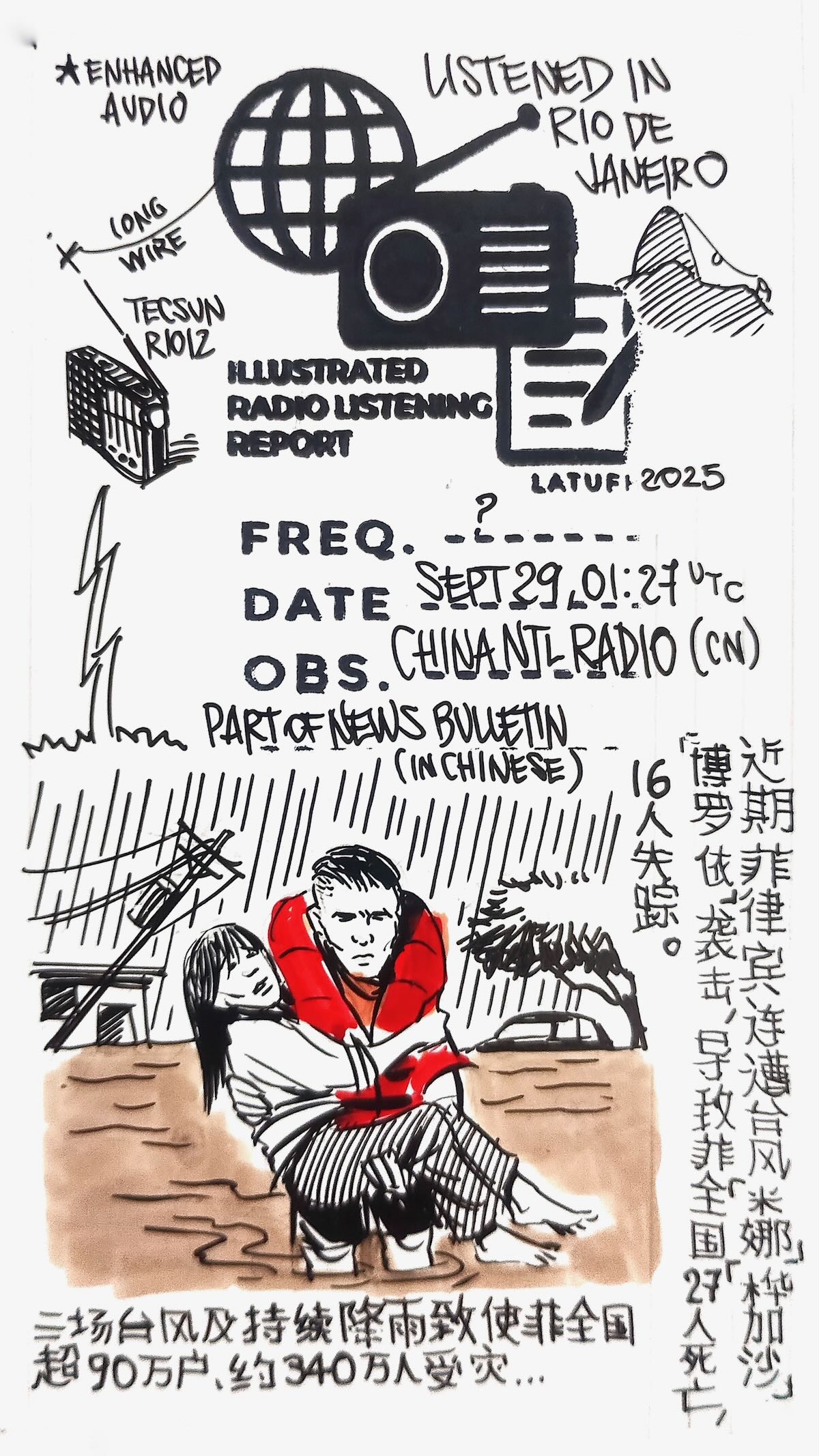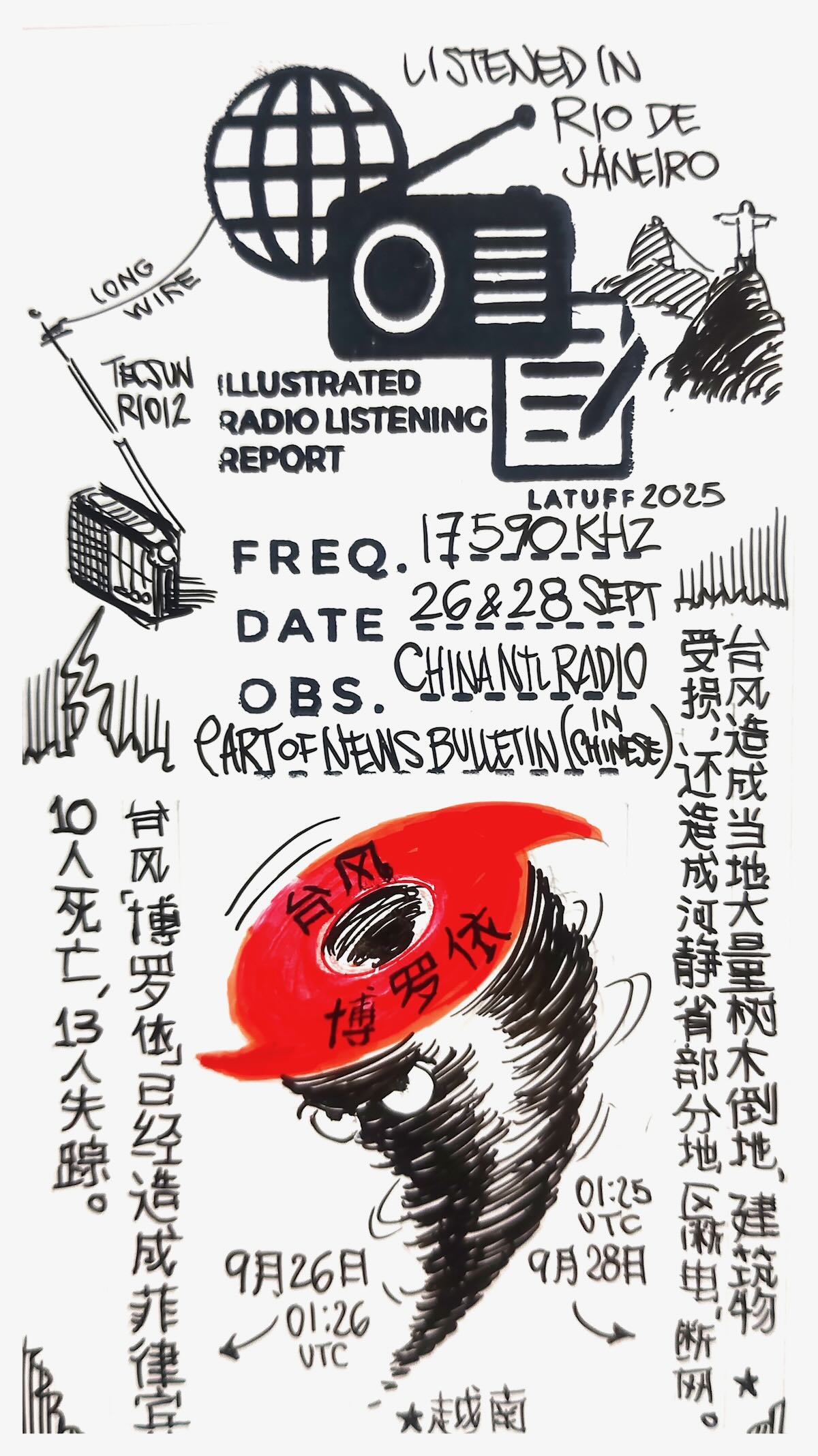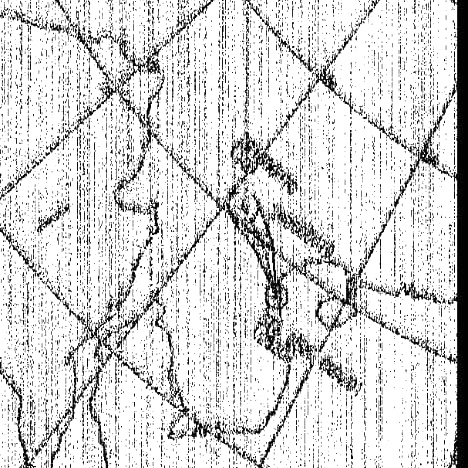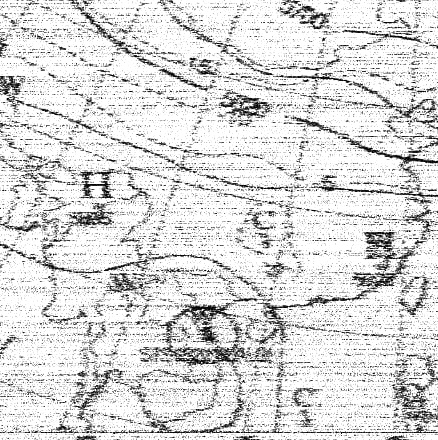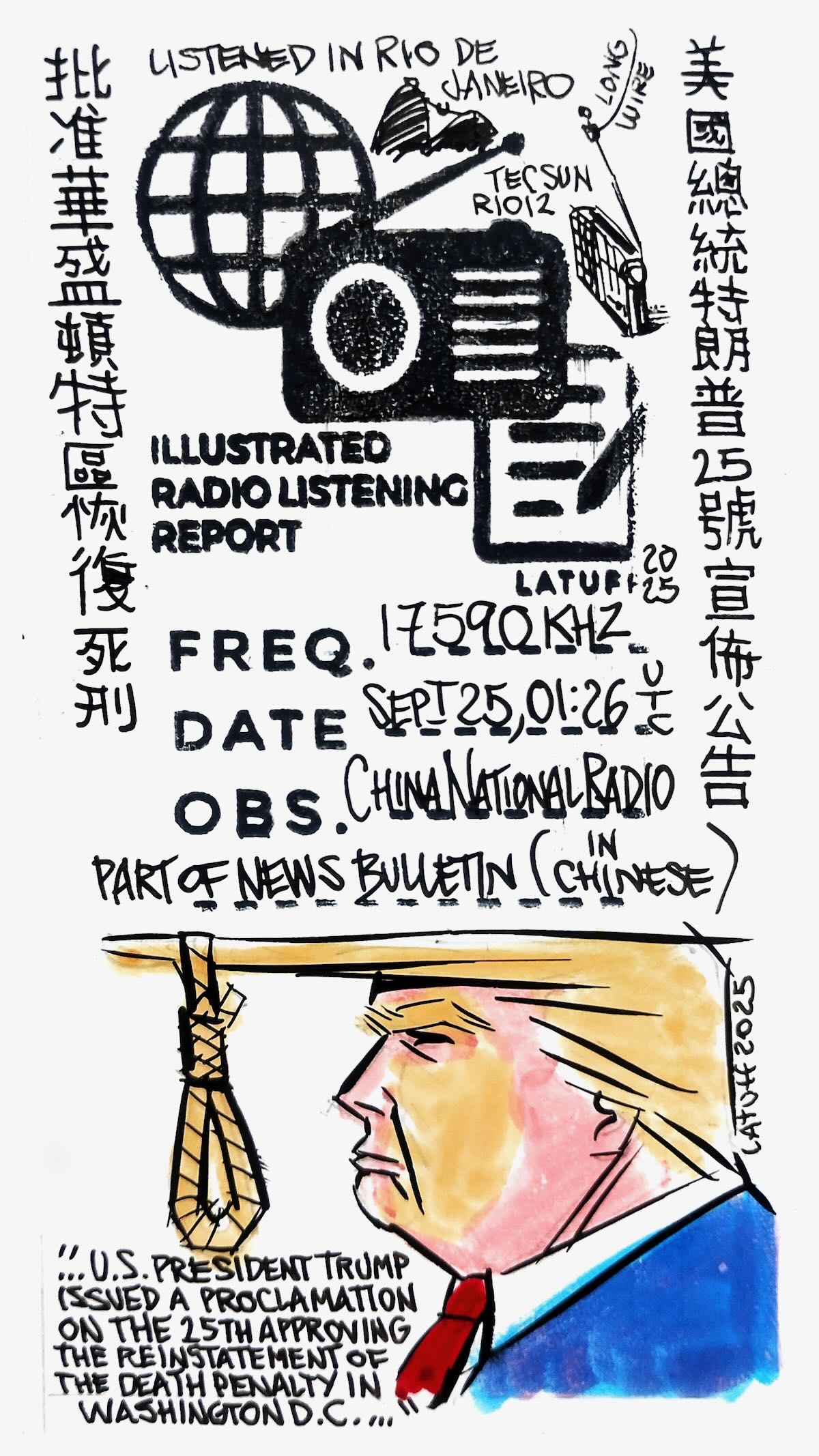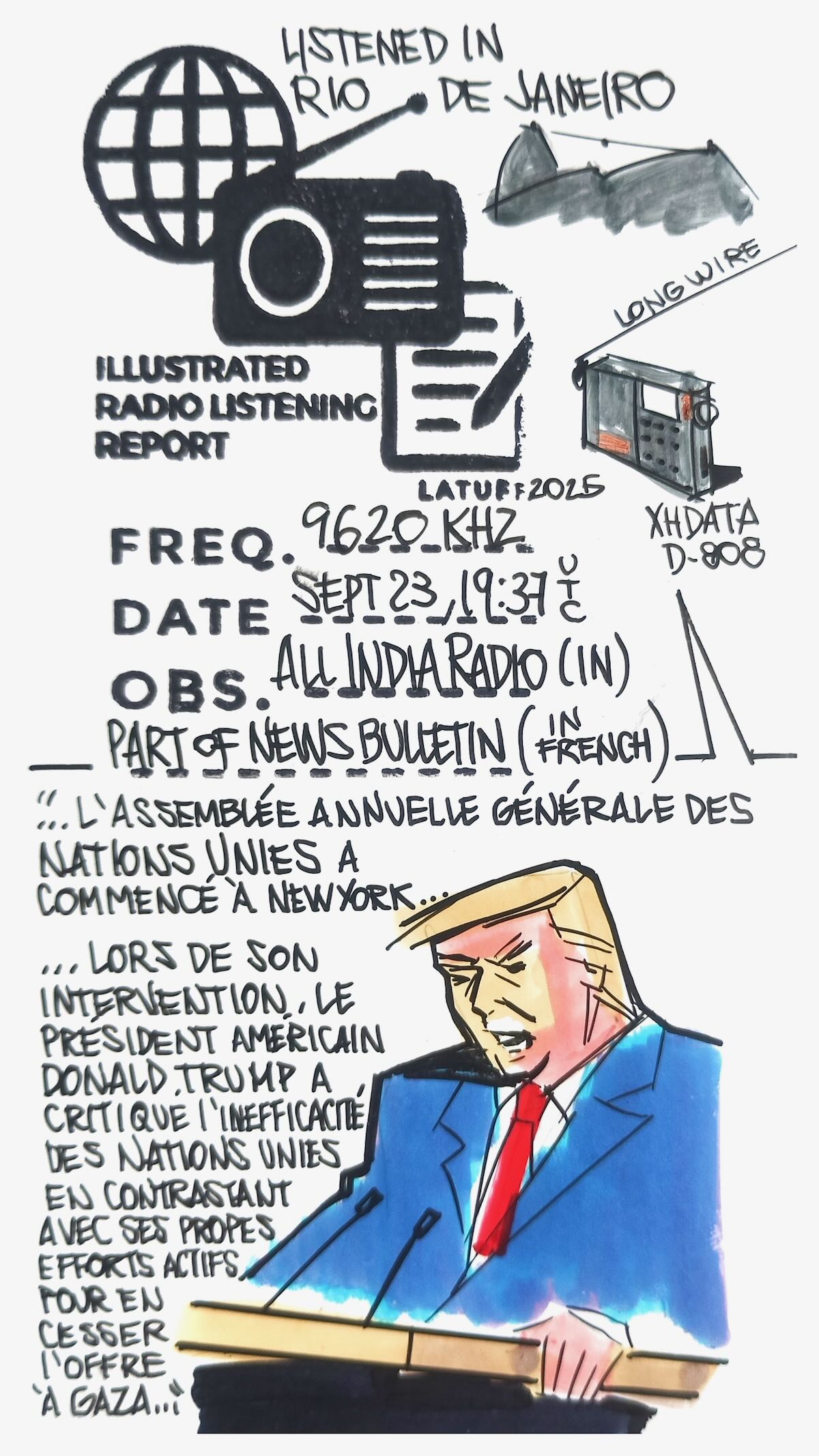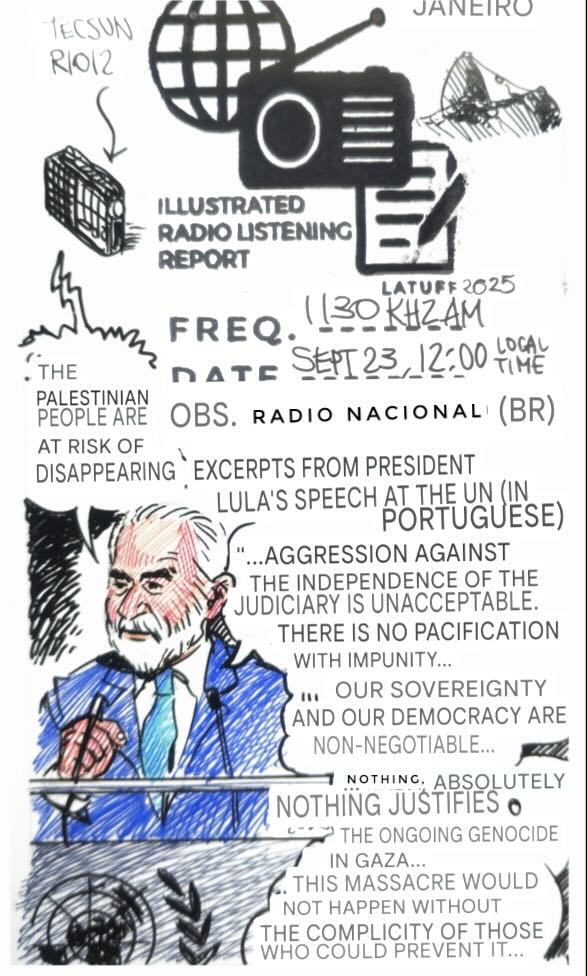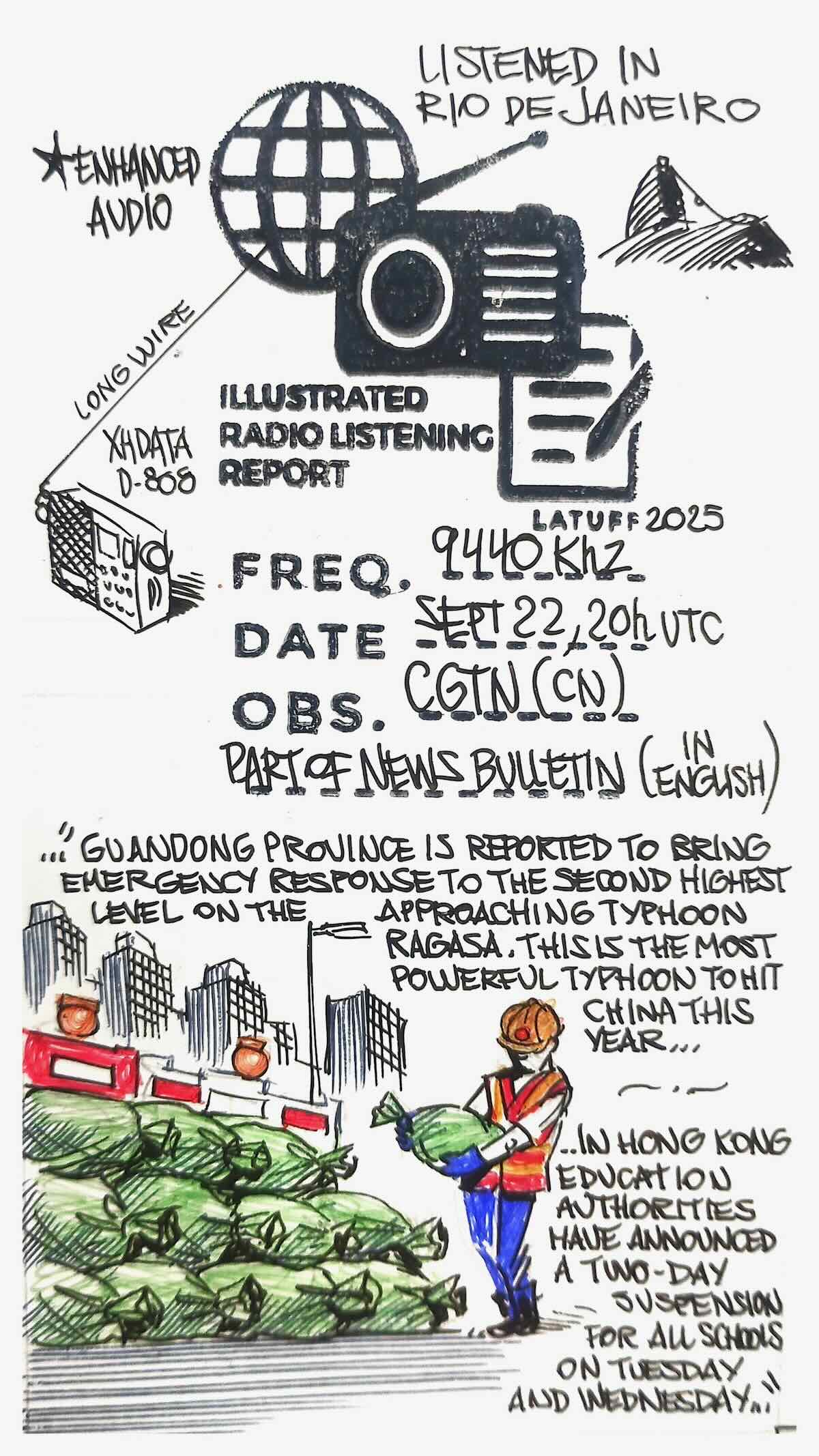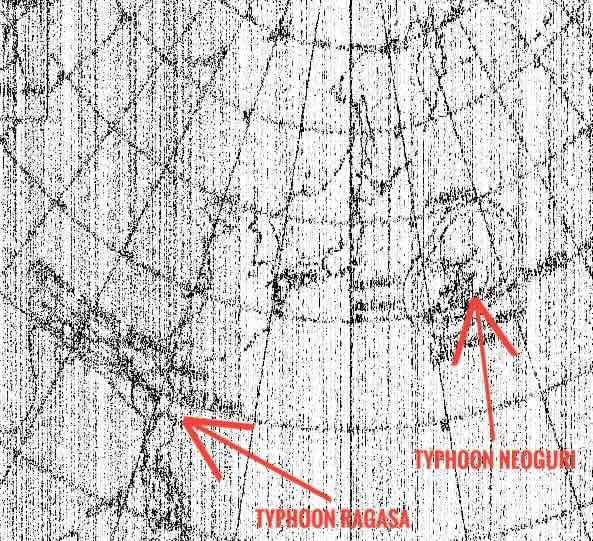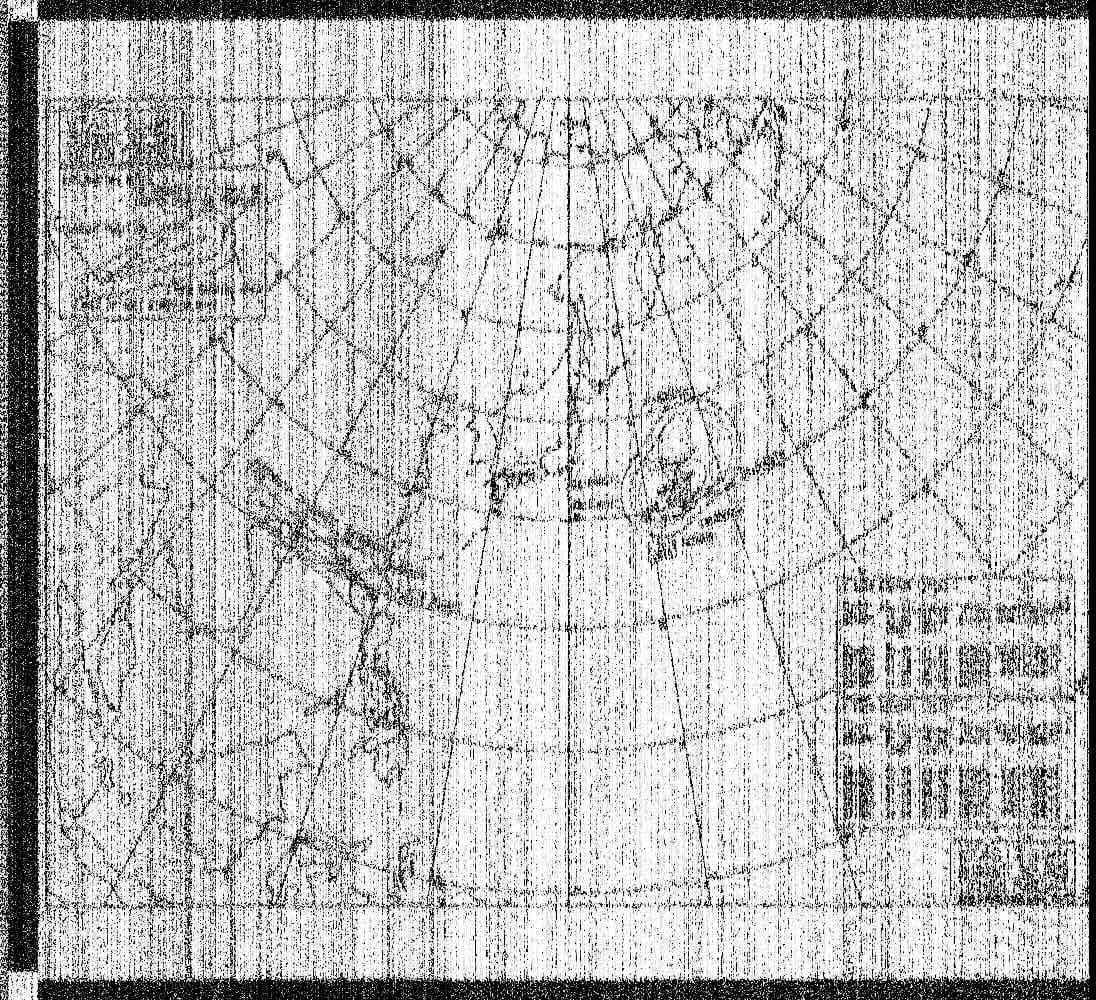Many thanks to SWLing Post contributor and noted political cartoonist, Carlos Latuff, who shares the following illustrated radio listening report of a recent Voice of Vietnam broadcast.
Carlos notes:
More than 40 dead and missing after Typhoon Bualoi makes landfall in Vietnam, Voice of Vietnam, 11885 kHz
Click here to view on YouTube.
UPDATE
Carlos follows up with the following message:
Once again, I have one of my illustrated radio listening reports published on the Voice of Vietnam website, which is a great honor for me.
https://vovworld.vn/fr-CH/courrier-des-auditeurs/les-trains-de-nuit-au-vietnam-1424691.vov
When I sent this illustrated report, commemorating the 80th anniversary of this famous Vietnamese broadcaster, I received a beautiful and touching message, which I reproduce here.
“Dear friend,
We were deeply moved to receive your magnificent illustration on the occasion of the 80th anniversary of the Voice of Vietnam. Your creation is much more than a simple listening report: it is a true work of art, full of passion, talent, and friendship.
Every detail, from the portrait of President Ho Chi Minh to the Vietnamese flag and shortwave radio, reflects not only your creativity but also your deep attachment to our radio station. We are deeply touched that you chose to celebrate this historic anniversary in such an original and warm way.
Receiving such a token of friendship from Rio de Janeiro is a precious encouragement for us. You have transformed the listening experience into a universal message of fraternity and sharing. Please know that our entire team is moved and grateful for this exceptional gift.
On behalf of the Voice of Vietnam, we extend our most sincere thanks and deepest gratitude. Your gesture will remain an unforgettable memory of this anniversary.
With our radio friendship, The Voice of Vietnam Team”

